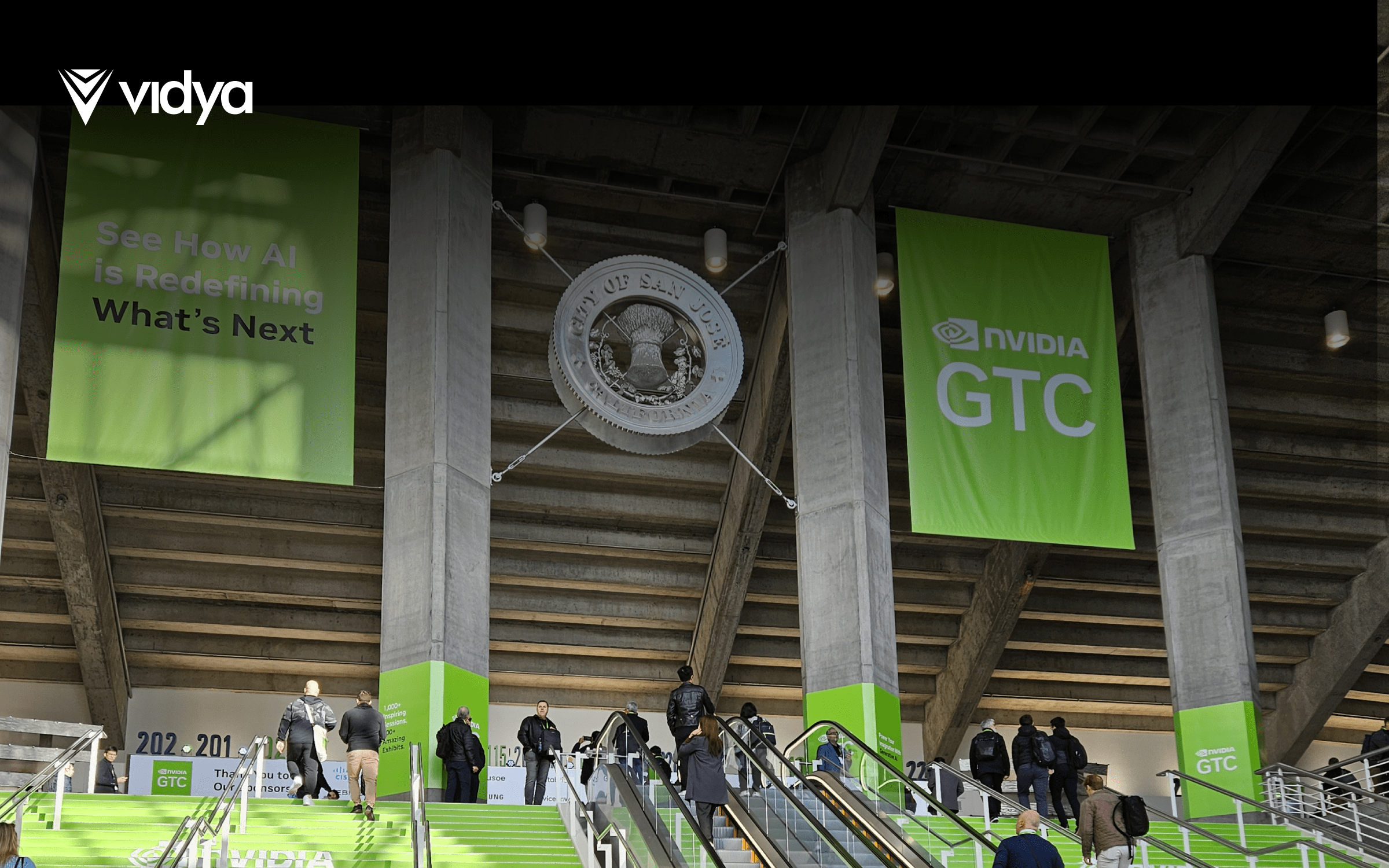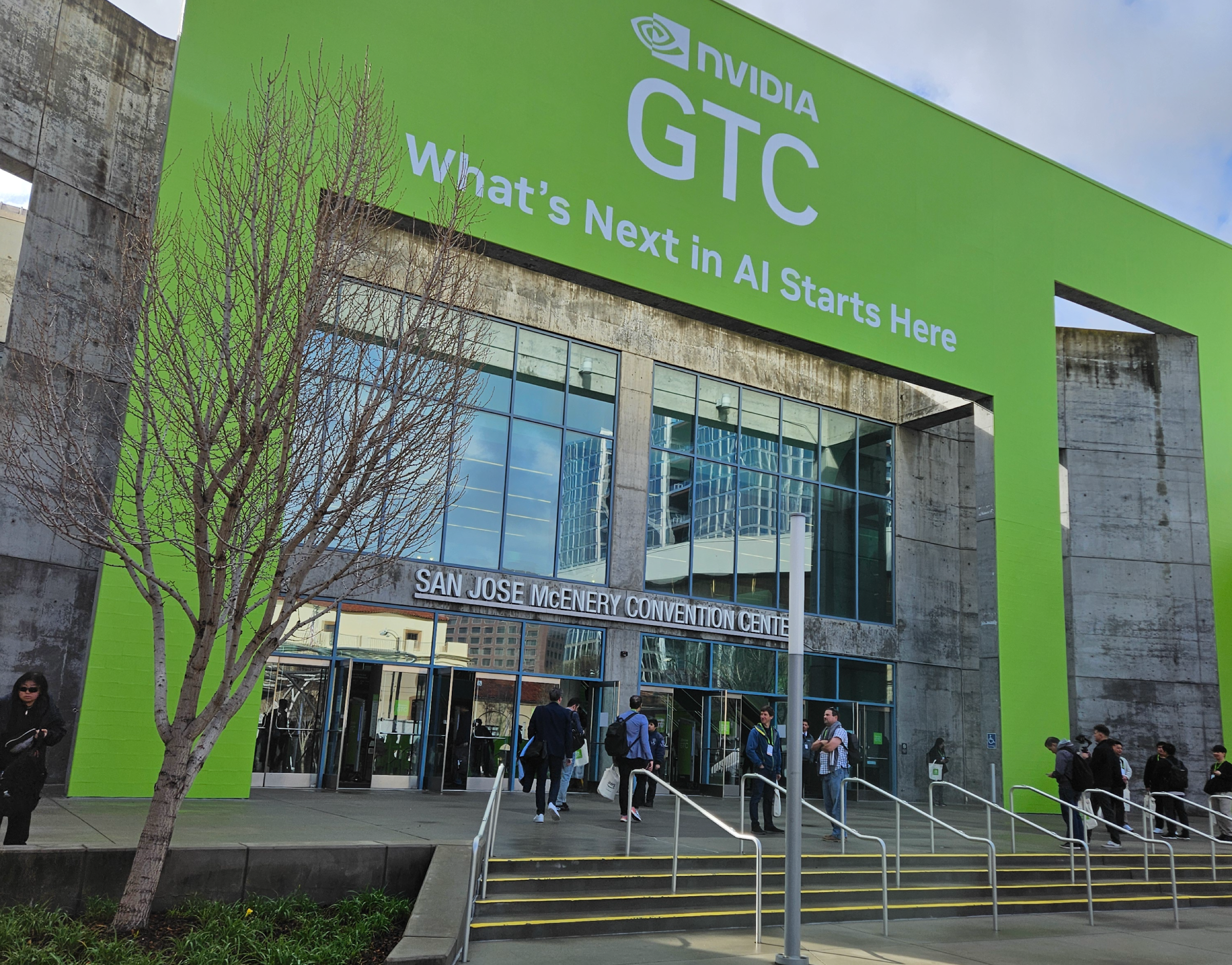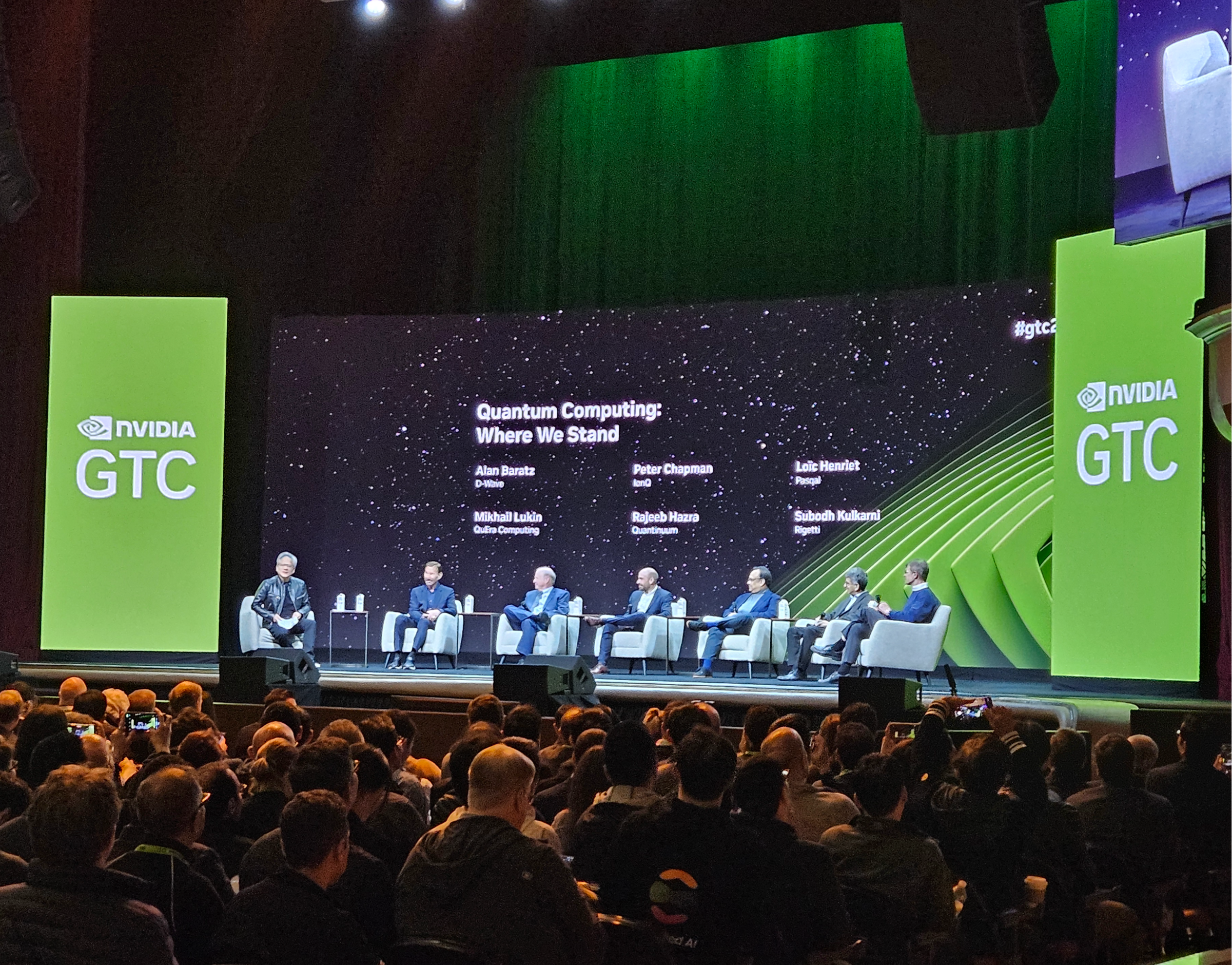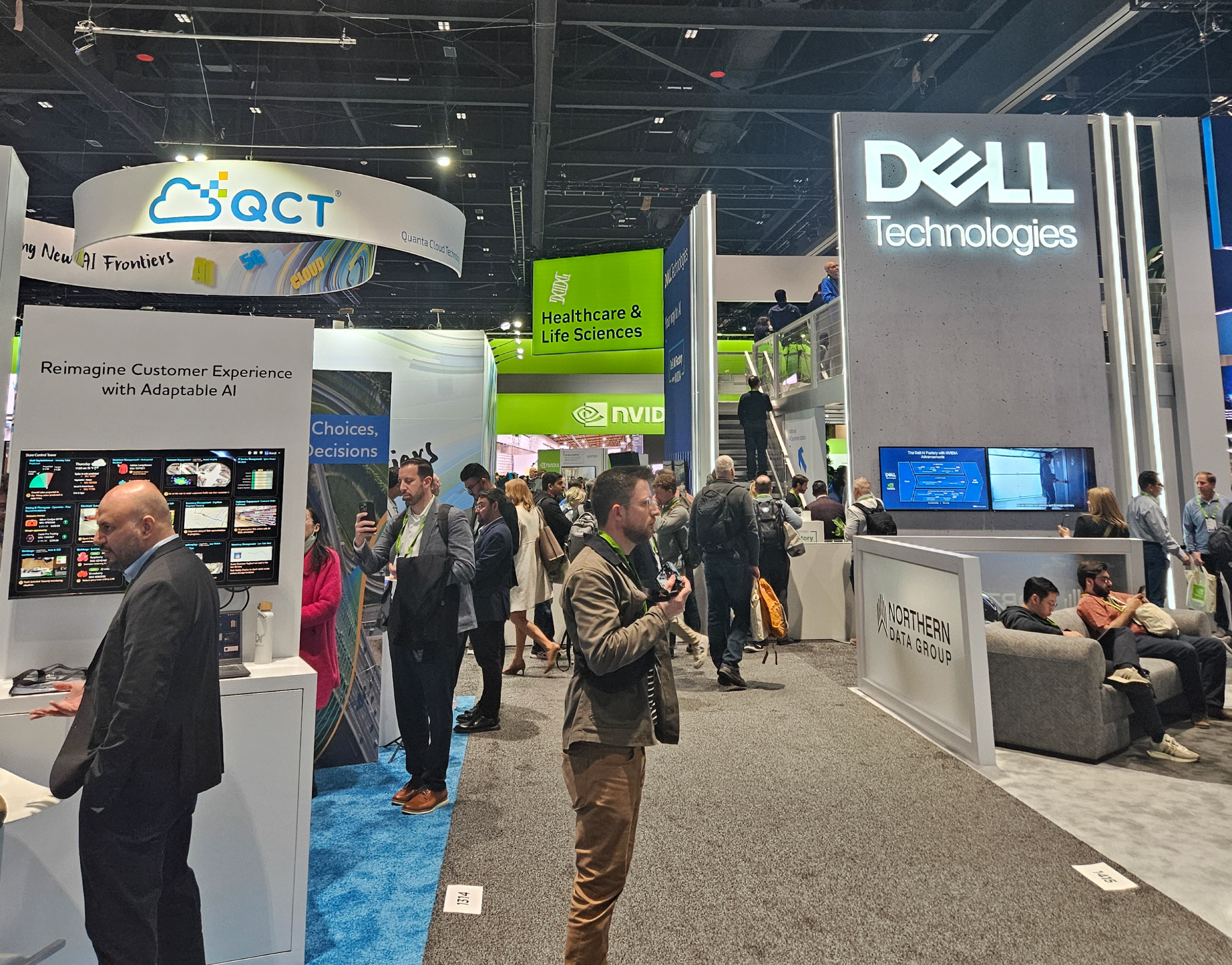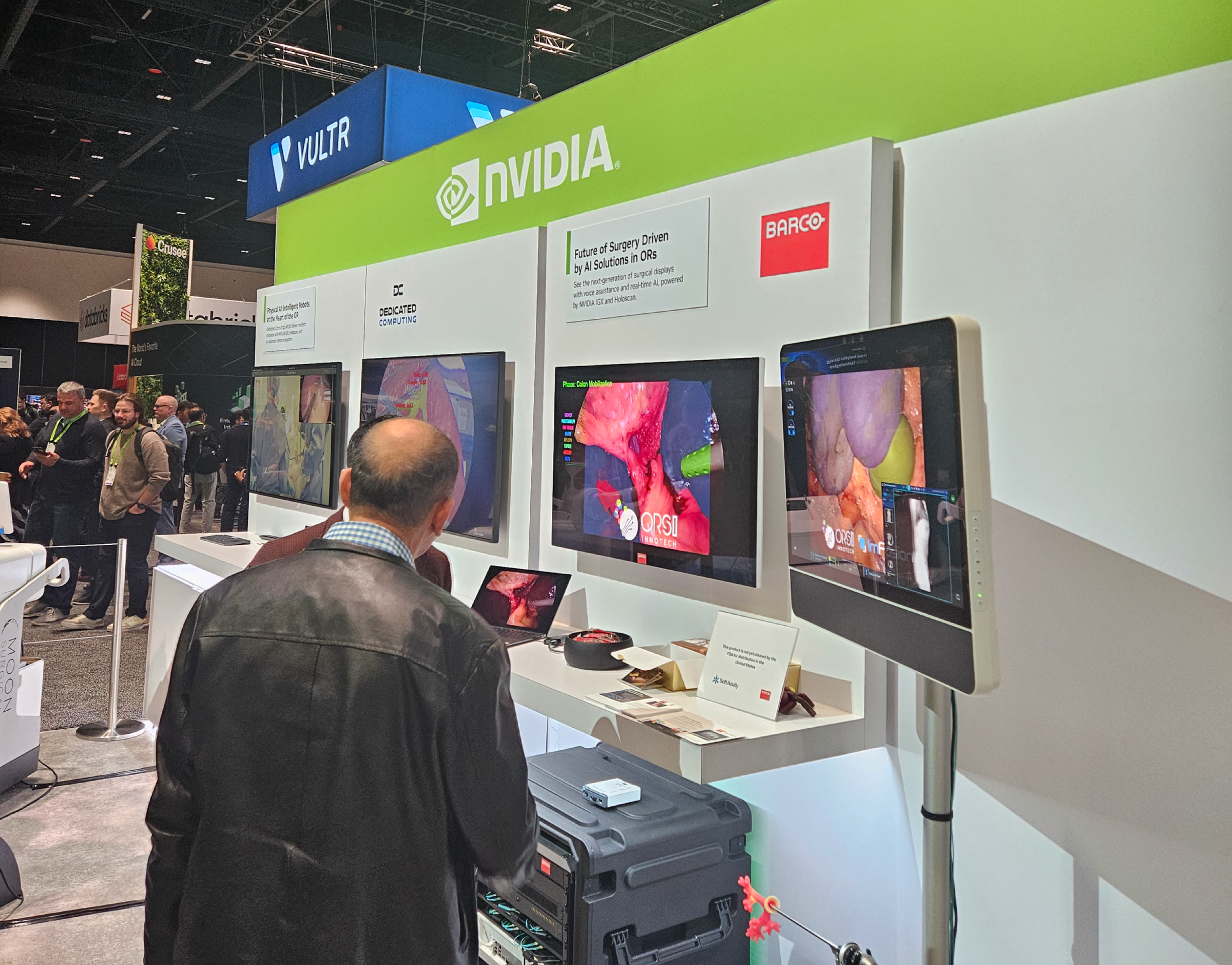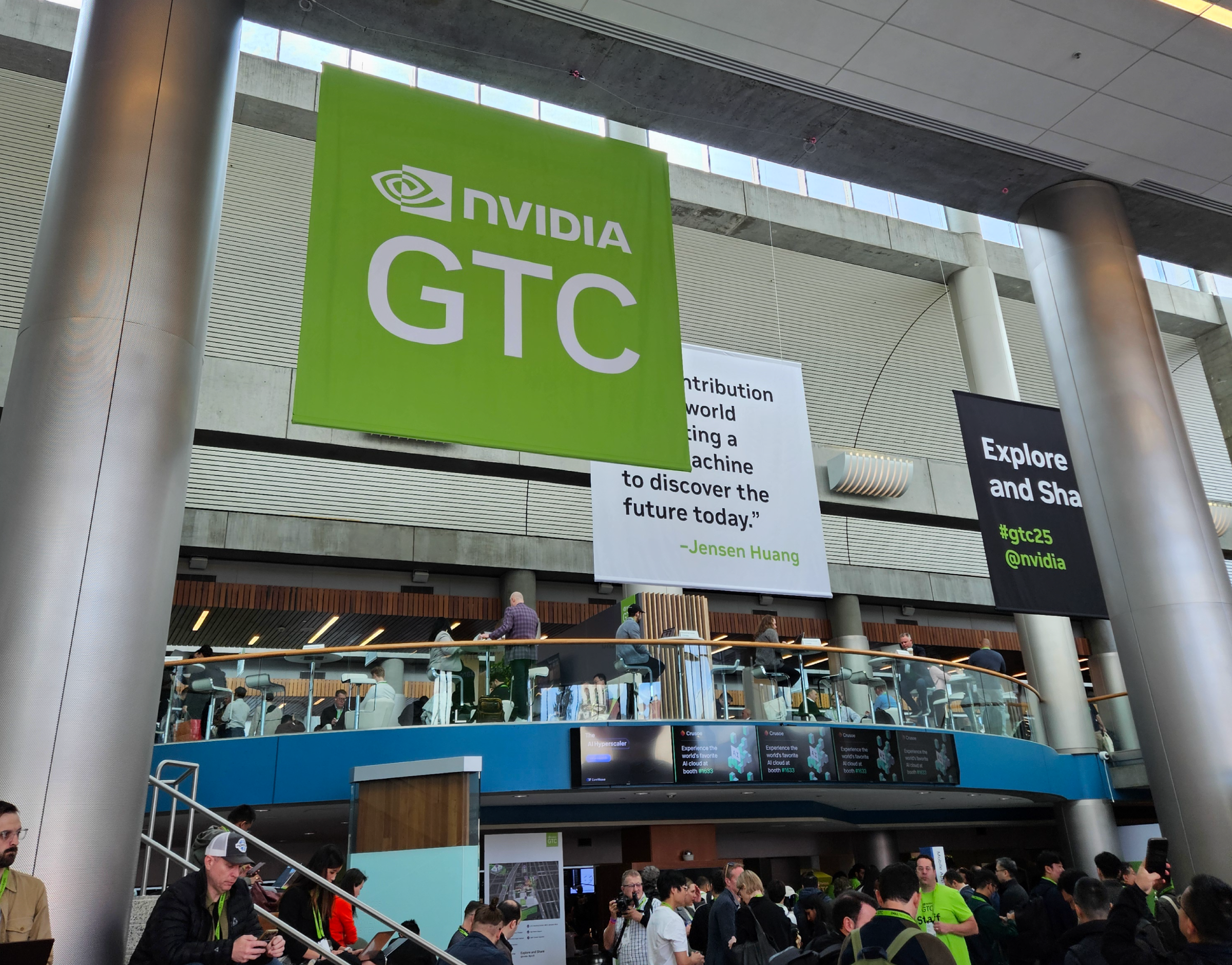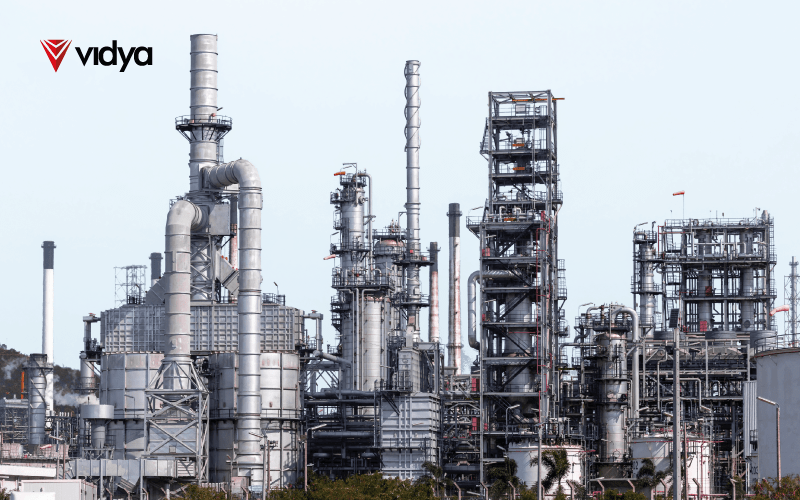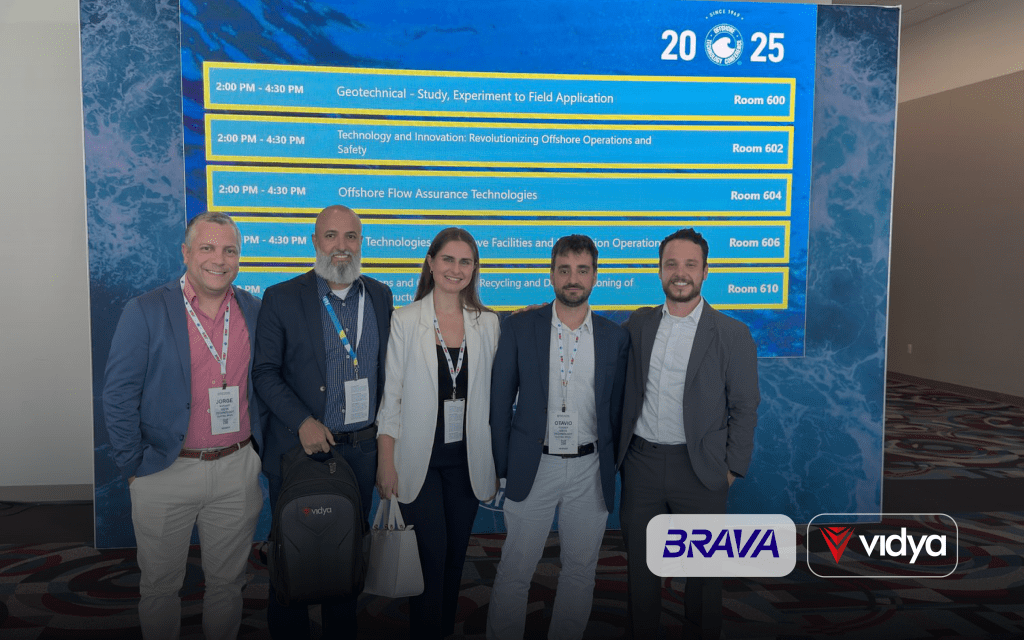Vidya Technology attended NVIDIA GTC 2025, widely known as the Super Bowl of AI, represented by Vinicius Bartolomeu, CPO at Vidya. This year’s event focused on the accelerated evolution of AI, with groundbreaking announcements that are redefining how we engage with the world. From scaling intelligent systems to increasing autonomy, integrating AI with the physical world, and exploring its convergence with quantum computing, GTC 2025 showcased a future that is already unfolding.
These advancements are no longer just concepts—they are actively transforming industries, including the ones we work with at Vidya. Here are our key insights and takeaways from the conference.
*Written by Vinicius Bartolomeu, CPO at Vidya Technology
1. Agentic AI
Artificial intelligence is evolving from passive tools that provide insights to proactive agents capable of autonomous data analysis, decision-making, and task execution without human intervention. NVIDIA’s CEO Jensen Huang highlighted this shift during his GTC 2025 keynote, stating, “The amount of computation we need as a result of agentic AI, as a result of reasoning, is easily 100 times more than we thought we needed this time last year.”
These AI agents extend beyond simple task automation, managing real-time business processes and tackling complex, multi-step problem-solving with minimal human input, thereby redefining industry approaches to efficiency and intelligence.
NVIDIA’s recent advancements reflect this evolution. Their AI agent frameworks are increasingly context-aware, self-correcting, and capable of learning from continuous data streams. Unlike traditional rule-based models, these systems adapt to dynamic environments, making nuanced decisions autonomously and reducing reliance on static logic and human oversight.
2. AI Factories: NVIDIA’s Transformation and Industry Implications
As artificial intelligence (AI) adoption accelerates, the demand for computational power has surpassed the capabilities of traditional infrastructure. This surge has led to the emergence of AI factories—specialized, scalable computing hubs designed to train, deploy, and continuously refine AI models. NVIDIA, traditionally known for its graphics processing units (GPUs), has strategically repositioned itself to become a central player in this new landscape.
During the GTC 2025 keynote, NVIDIA CEO Jensen Huang articulated this strategic shift, stating, “NVIDIA is an AI infrastructure company. We’re an infrastructure company, not just ‘buy chips, sell chips.'” This statement underscores NVIDIA’s evolution from a hardware-centric enterprise to a comprehensive provider of AI solutions, emphasizing the company’s commitment to delivering end-to-end AI infrastructure.
This transformation reflects a broader industry trend where companies are integrating AI more deeply into their operations, necessitating dedicated AI factories. These facilities are tailored to handle the intensive computational requirements of modern AI applications, facilitating real-time data processing and complex problem-solving. By establishing AI factories, organizations can enhance efficiency, foster innovation, and maintain a competitive edge in the rapidly evolving technological landscape.
NVIDIA’s proactive approach in this domain not only highlights the growing significance of AI factories but also positions the company as a pivotal enabler of AI-driven advancements across various industries. This strategic pivot from solely developing hardware to offering integrated AI infrastructure solutions exemplifies the dynamic nature of the tech industry and the imperative for companies to adapt to emerging technological paradigms.
3. Physical AI
AI is breaking out of the digital realm and stepping into the physical world. No longer limited to software and cloud-based systems, Physical AI represents the convergence of artificial intelligence with robotics and intelligent machines capable of perceiving, interpreting, and acting autonomously in dynamic environments.
This evolution is transforming machines from automated tools into adaptive, decision-making agents. At GTC 2025, Jensen Huang emphasized this shift, stating that AI is now “reaching beyond the screen and into the physical world.” This marks a critical turning point—where AI doesn’t just analyze reality, it interacts with and shapes it.
From smart robotics and self-optimizing industrial systems to autonomous vehicles and drones, Physical AI is redefining what machines can do. These systems can now see, sense, manipulate, and learn in real-time, bridging the gap between automation and intelligence. And the impact is already measurable. According to Fortune Business Insights, the global autonomous vehicle market was valued at USD 1,921.1 billion in 2023 and is projected to soar to USD 13,632.4 billion by 2030. This kind of growth signals that Physical AI is not a distant concept—it’s one of the fastest-moving frontiers in the AI revolution.
4. Quantum Computing + AI
The convergence of quantum computing and artificial intelligence (AI) is opening up new possibilities in computation, with the potential to transform areas like optimization, cryptography, drug discovery, and materials science. As AI continues to demand increasing amounts of processing power, traditional computing is beginning to show its limits when handling highly complex problems. Quantum processing offers a promising path forward.
During Quantum Day at GTC 2025, Jensen Huang addressed this shift directly, clarifying, “We shouldn’t call it quantum computing. It gives people the wrong impression. This is a quantum processing unit, a QPU. It’s a specialized accelerator, not a replacement for the computer.” This statement reflects NVIDIA’s view that quantum technology is not meant to stand alone, but to work alongside CPUs and GPUs as part of an integrated computing ecosystem.
Quantum AI builds on this vision by applying the principles of quantum mechanics to AI models. Unlike classical bits, which are either 0 or 1, qubits can represent multiple states at once through a property called superposition. This allows quantum systems to evaluate many outcomes simultaneously, offering a potential leap in performance for specific, highly complex tasks.
However, throughout the event, it was made clear that this is a long-term vision. Quantum AI is still in its early stages. The hardware, algorithms, and error correction systems required for practical use are still maturing. As Jensen noted, the road ahead is long, and it will take many more years before quantum processing becomes part of everyday AI workflows.
Conclusion
Despite the similar names, Vidya and NVIDIA aren’t long-lost siblings—but after GTC 2025, it’s clear we share a common vision of the future. AI is advancing faster than ever, and those who embrace it today will shape the industries of tomorrow.
From agentic AI and AI factories to physical intelligence and quantum acceleration, the path forward is already unfolding. The technology is here, the momentum is real, and the opportunity is now.
AI isn’t waiting, and neither should we.
